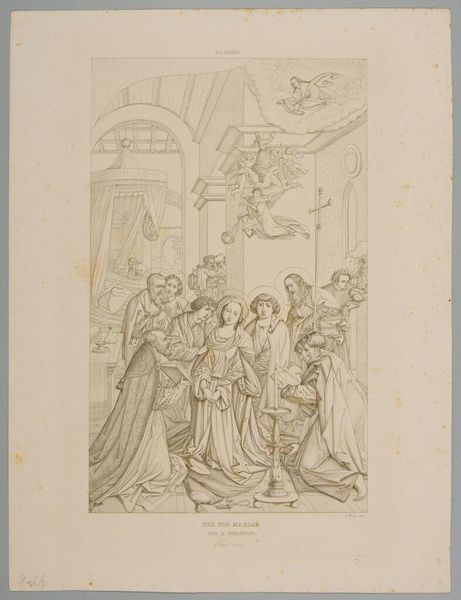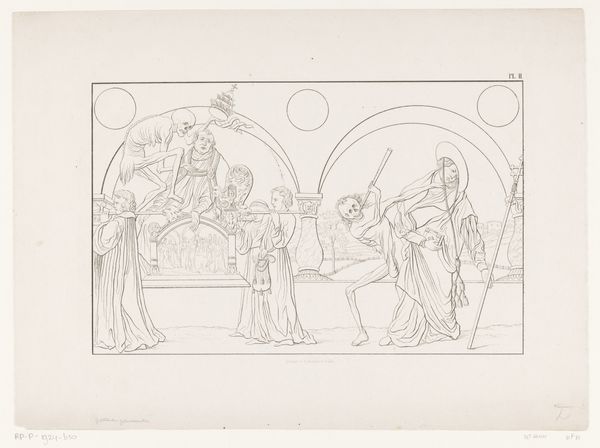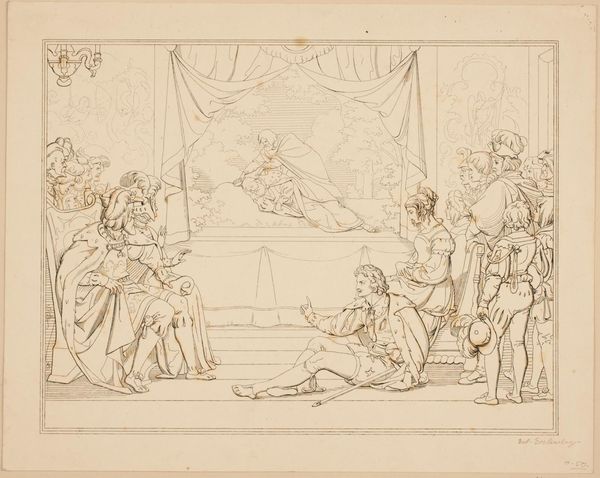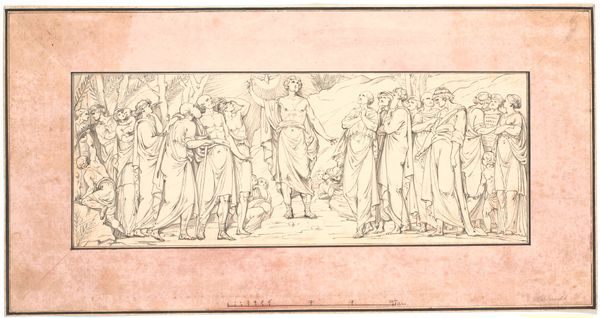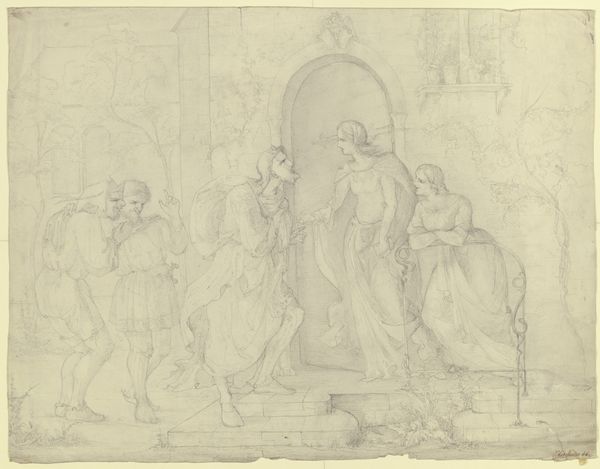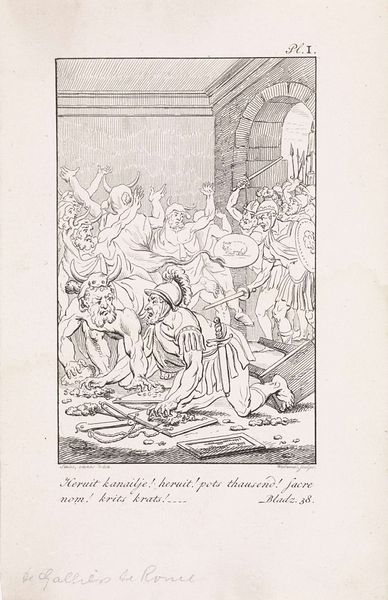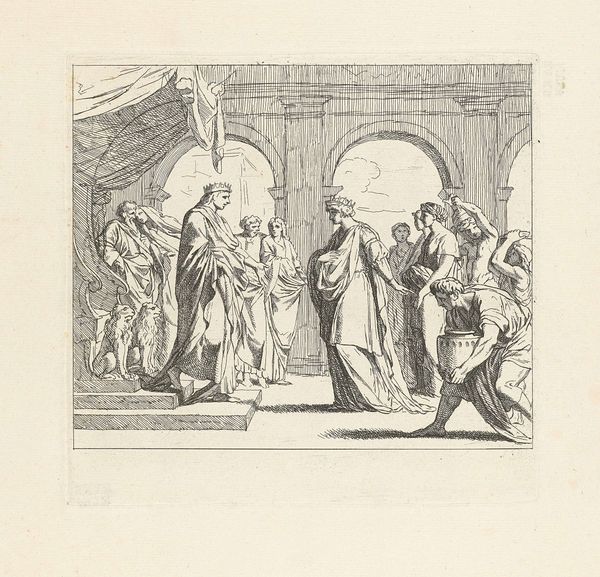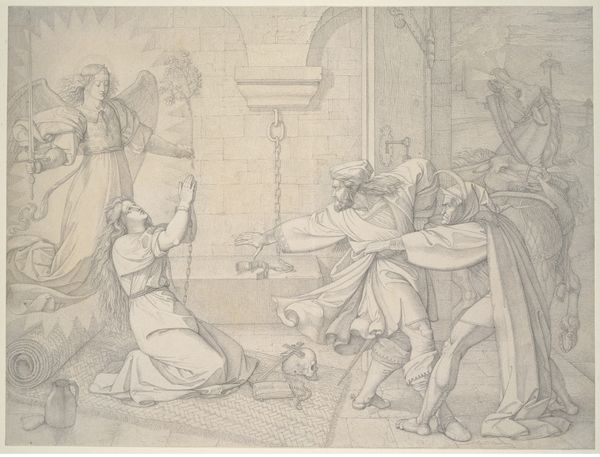
print, etching
#
neoclacissism
# print
#
etching
#
figuration
#
genre-painting
#
history-painting
Dimensions: height 144 mm, width 211 mm
Copyright: Rijks Museum: Open Domain
Jacob Ernst Marcus made this print, "Figuren rond een beeld van Janus," using etching, a process with a long history. The artist covers a metal plate with a waxy, acid-resistant ground. He then scratches an image into the ground, exposing the metal. When the plate is dipped in acid, the exposed lines are "bitten" or etched into the plate. This print would have been made by inking the plate, wiping the surface clean, and then pressing paper against it. The pressure forces the paper into the etched lines to pick up the ink. As you can see, the etched lines allow for incredibly fine detail. The final print is an indirect result of the artist’s hand, mediated by the chemical process of the acid. Though these prints were often considered reproductive technologies used to disseminate artworks, the skill involved in creating them shouldn't be dismissed. The various stages of production each require a deep understanding of materials, making it a craft as much as a mode of mechanical reproduction.
Comments
No comments
Be the first to comment and join the conversation on the ultimate creative platform.
